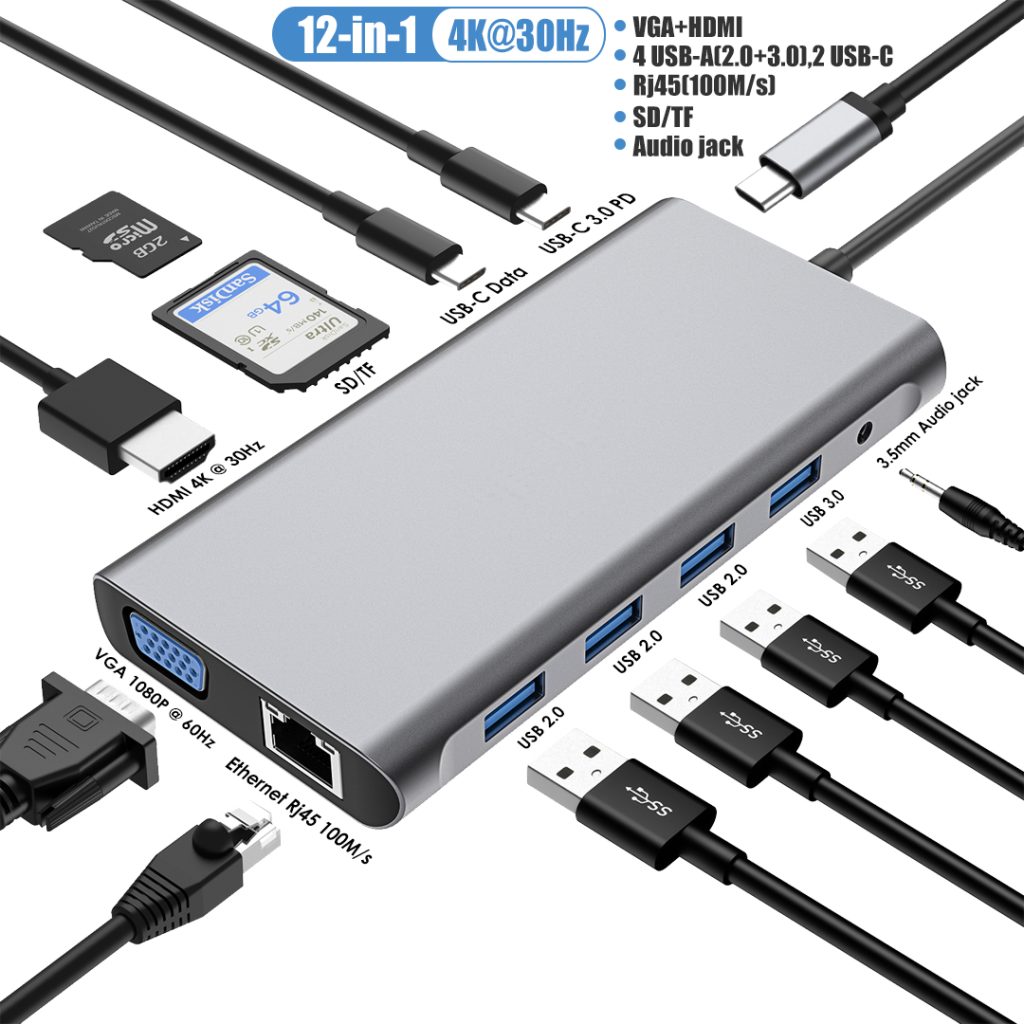How to select a right USB-C Hub?
When selecting a suitable USB-C hub, you can consider the following aspects:
1. Purpose and Requirements
- Peripheral connections: If you need to connect external monitors, keyboards, mice, or printers, make sure the hub has enough USB-A, USB-C, HDMI, or DisplayPort connections.
- Data transfer: For fast data transfer, ensure that the hub’s USB ports support USB 3.0 or higher standards (such as USB 3.1 or USB 3.2), which offer faster transfer speeds.
- Display output: If you need to connect external monitors, check whether the hub supports 4K or higher resolution and its type of output port (e.g., HDMI, DisplayPort).
- Power delivery: If you want to charge your device through the hub, ensure the hub supports Power Delivery (PD) and check its maximum power output.
2. Type and Number of Ports
- USB-A ports: For connecting traditional USB devices like flash drives, keyboards, and mice.
- USB-C ports: Some hubs provide USB-C ports for data or charging; be sure to distinguish between ports that only support charging and those that support data transfer.
- Video output ports: Such as HDMI, and DisplayPort, if you need to connect a monitor or projector.
- Ethernet port: If you need a stable wired internet connection, make sure the hub includes an RJ45 Ethernet port.
- SD/TF card slots: Useful for photographers or users who frequently read and write to memory cards.
3. Power Requirements
- Power capacity: If you are connecting multiple devices through the hub, it needs to supply adequate power, especially when connecting power-hungry devices like hard drives or monitors.
- Self-powered vs bus-powered: Check whether the hub requires an additional power adapter. Self-powered hubs can provide more stable power for connected devices.
4. Transfer Speed
- USB standards: USB-C hubs typically support USB 3.0, USB 3.1, or higher standards. It’s recommended to choose at least USB 3.0 to ensure high-speed data transfer (5Gbps or higher).
- Thunderbolt ports: If your device supports Thunderbolt 3 or Thunderbolt 4, selecting a hub that supports these standards can offer faster transfer speeds and additional features (e.g., higher resolution display output).
5. Compatibility
- Operating system support: Ensure the hub is compatible with your operating system, whether it’s Windows, macOS, or Linux.
- Device support: Some USB-C hubs are designed to work better with specific brands (such as Apple, Dell, or HP), so make sure the hub is well-suited for your device.
6. Brand and Quality
- Reputable brands: Brands like Belkin, Anker, Ugreen, and Satechi are known for producing high-quality hubs that are more durable and reliable.
- Heat dissipation design: Hubs can heat up during long-term use, so a good hub should have efficient heat dissipation to avoid performance degradation due to overheating.
7. Portability and Appearance
- Size and weight: If you frequently travel, a lightweight and compact hub will be more convenient.
- Material and build quality: The material of the hub (such as metal or plastic) affects its durability and heat dissipation. Metal casings are generally sturdier and offer better heat dissipation.
8. Price
- Choose a product that offers the best combination of features and quality within your budget. Higher-priced hubs tend to offer better performance, more ports, and stronger brand support.
By considering these factors, you can select a USB-C hub that best suits your needs.





Leave a Reply